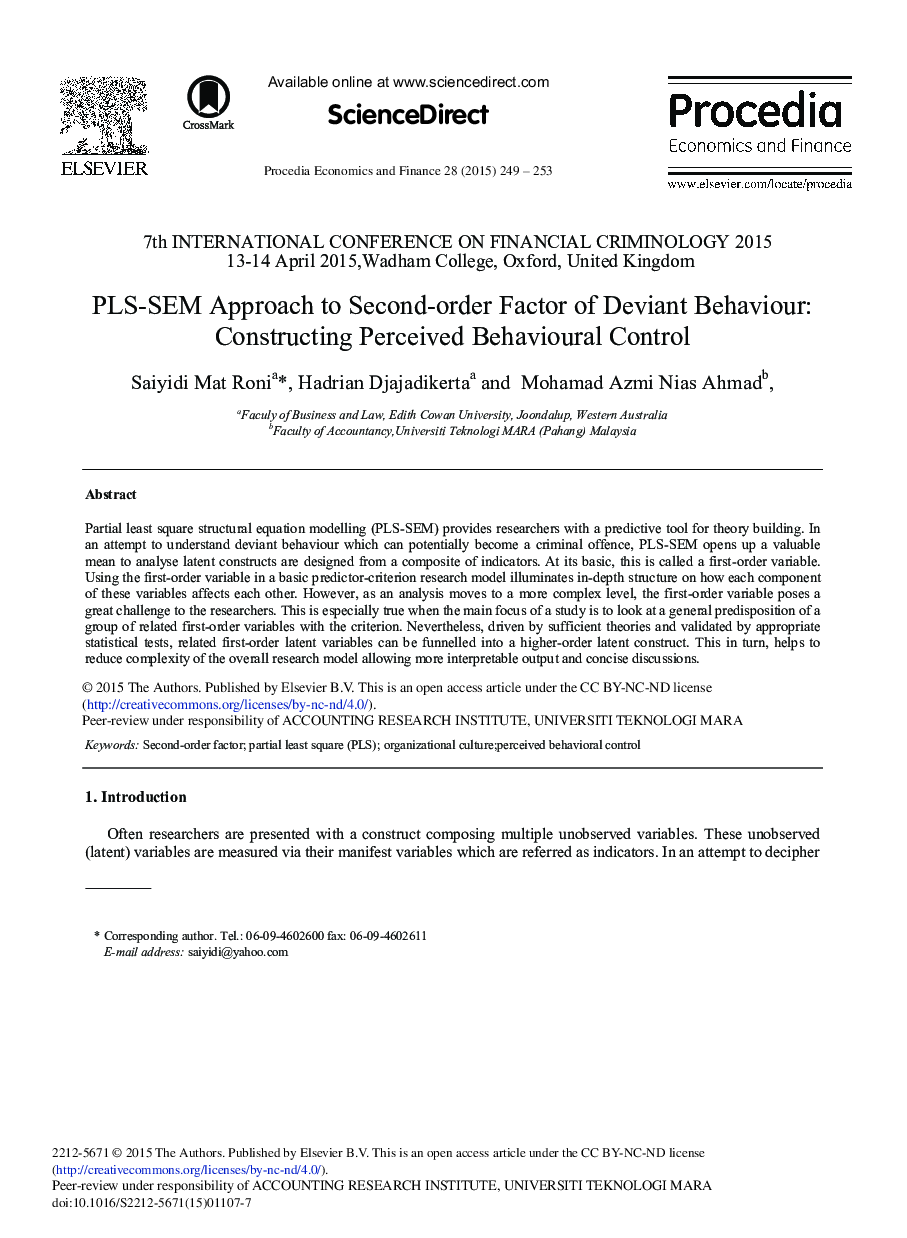| Article ID | Journal | Published Year | Pages | File Type |
|---|---|---|---|---|
| 979936 | Procedia Economics and Finance | 2015 | 5 Pages |
Partial least square structural equation modelling (PLS-SEM) provides researchers with a predictive tool for theory building. In an attempt to understand deviant behaviour which can potentially become a criminal offence, PLS-SEM opens up a valuable mean to analyse latent constructs are designed from a composite of indicators. At its basic, this is called a first-order variable. Using the first-order variable in a basic predictor-criterion research model illuminates in-depth structure on how each component of these variables affects each other. However, as an analysis moves to a more complex level, the first-order variable poses a great challenge to the researchers. This is especially true when the main focus of a study is to look at a general predisposition of a group of related first-order variables with the criterion. Nevertheless, driven by sufficient theories and validated by appropriate statistical tests, related first-order latent variables can be funnelled into a higher-order latent construct. This in turn, helps to reduce complexity of the overall research model allowing more interpretable output and concise discussions.
